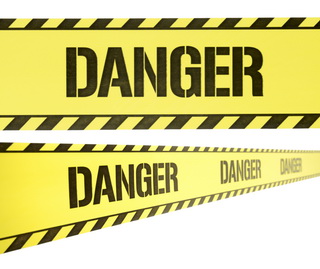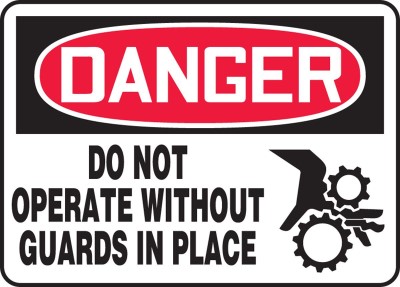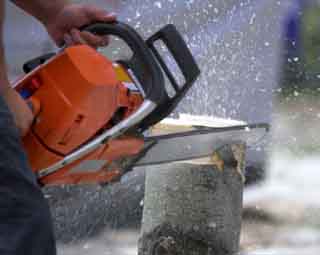
Warnings – When, Why and How?
On the Scene E-Newsletter, Edition 123, September 20, 2010
 When products are engineered, manufactured and placed into the stream of commerce, the products have to be safe. Companies have a responsibility to eliminate all foreseeable hazards from their products, if possible. If hazards cannot be eliminated without jeopardizing the utility of the product and/or making the product prohibitively expensive than the hazards should be guarded. The guards must effectively prevent accidents and not introduce other types of accidents into the product. For those hazards that cannot be properly guarded, the consumer should be warned of possible dangers associated with the product.
When products are engineered, manufactured and placed into the stream of commerce, the products have to be safe. Companies have a responsibility to eliminate all foreseeable hazards from their products, if possible. If hazards cannot be eliminated without jeopardizing the utility of the product and/or making the product prohibitively expensive than the hazards should be guarded. The guards must effectively prevent accidents and not introduce other types of accidents into the product. For those hazards that cannot be properly guarded, the consumer should be warned of possible dangers associated with the product.
For example, a rapidly rotating chainsaw blade with its sharp teeth is an obvious hazard. Designing a cover or guard over the saw blade would make the blade unable to contact a work piece and would make the saw useless. Only a warning can be used to help users of a chainsaw understand and appreciate the dangers of the rotating saw blade. A lawn service that spreads a pesticide on a lawn cannot eliminate the dangers associated with the use of their products. The lawn service can reduce the risks associated with their services by placing warning signs on the lawn indicating that people should stay away from the lawn until the chemicals in the pesticide have become inactive.
A common question often asked of CED engineers is if a warning had been used to indicate a hazard and to hopefully modify human behavior, would an accident been prevented. Studies show that many people fail to notice warnings. Studies also show that a certain percent of people who notice a warning on a product make a decision not to read the warning. Some research studies show that if a person is already familiar with a product, that person is less likely to read a warning. The same can be said for instructions. If a person knows how to assemble a product, that person may decide not to read the instruction pamphlet that is located inside the shipping box. It is when you purchase a new barbecue and 300 parts fall out of the box that you will immediately decide to read the instruction pamphlet or you will never get the grill correctly assembled.
What is known about warnings is that warnings must be correctly designed and placed in such an obvious place on the product that the user of the product cannot help but see the warnings. There is an ANSI code entitled Specifications for Accident Prevention Signs and details everything from the proper signal word to the color and size of the lettering. Warnings need to be designed to this standard to eliminate any discussion that although there was a warning on the product, the warning was incorrectly designed and lacked those elements needed to attract attention to the warning and to promote redaing of the warning.
A warning on a product can be a “doubled edge sword”. For a product manufacturer placing a warning on a product is a direct admission that a hazard is known otherwise there would be no need for a warning at all. If ever involved in litigation, a representative of the manufacturer must be able to sit in front of a jury and explain why the hazard was not eliminated or guarded. This explanation has to encompass the details of the manufacturer’s design analysis of the safety aspects of the product. Such things as a Failure Modes and Effects Analysis (FEMA), patent research, human factors analysis, etc. need to be shown to the jury so that the jury can fully appreciate that the manufacturer acted responsibility and that there was no way to eliminate or guard the hazard and only a properly designed and placed warning was able to be used to make the product safe.
CED engineers have considerable experience in designing and analyzing warnings. On several occasions CED engineers have explained to a jury that a warning was an appropriate means to safeguard a product and that the warning was correctly design and properly placed on the product. On other occasions CED analysis has shown that there were more effective means to safeguard a product or that although there was a warning on a product the warning was poorly written, improperly placed and ineffective in protective the product user from an injury.
For more information on CED or how we can assist you on your current or next case, please feel free to contact one of our case managers at casemanager@cedtechnologies.com or on the web at www.cedtechnologies.com .






